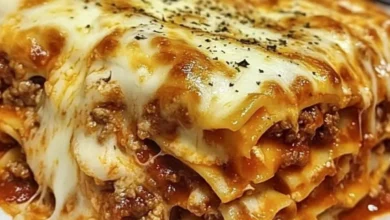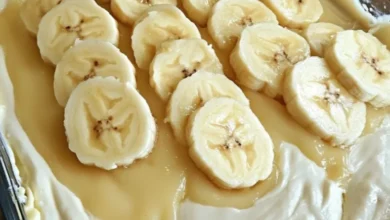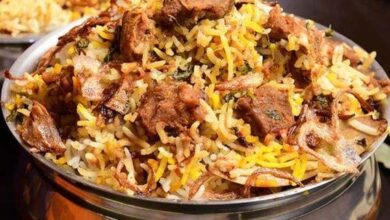Marsala Sauce: A Journey into Rich, Italian Flavors

Few sauces in the culinary world possess the immediate, evocative power of Marsala. The mere mention of its name conjures images of rustic Italian kitchens, sizzling pans, and an aroma that is at once rich, sweet, and deeply savory. Marsala sauce is a cornerstone of Italian-American cuisine, famously coating Chicken Marsala and veal cutlets with its luxurious glaze. But what exactly is this celebrated sauce? Beyond the restaurant menu staple lies a world of flavor, history, and technique waiting to be explored.
This comprehensive guide will take you on a journey through the essence of Marsala sauce. We will deconstruct its key components, explore the crucial role of its namesake wine, and provide you with foolproof, step-by-step methods to create an authentic, restaurant-quality Marsala sauce in your own kitchen.
The Heart and Soul: Deconstructing the Components of Marsala Sauce
A great Marsala sauce is a perfect symphony of a few simple, high-quality ingredients. Each component plays a critical role in building its complex flavor profile.
1. Marsala Wine: The Star of the Show
This is not just an ingredient; it is the foundation. Marsala is a fortified wine from Sicily, Italy, with a unique character ranging from dry (secco) to sweet (dolce).
- Dry vs. Sweet: For a classic savory Marsala sauce, dry Marsala is the traditional and preferred choice. It provides a nutty, slightly smoky complexity without excessive sweetness. Sweet Marsala can be used for dessert sauces or if you prefer a sweeter profile, but it will significantly alter the final dish.
- Quality Matters: Avoid “cooking Marsala” sold next to the vinegar in supermarkets. These products often contain salt and preservatives that will make your sauce unpalatably salty. Instead, choose a Marsala wine you would actually drink. A decent bottle from a wine shop will elevate your sauce from good to extraordinary.
- The Role of Fortification: Being fortified with brandy gives Marsala a higher alcohol content and a longer shelf life. When deglazed in the pan, it caramelizes beautifully, creating a deep, rich flavor base.
2. The Aromatics: Building the Flavor Foundation
- Shallots & Garlic: Shallots are preferred for their subtle, gentle onion flavor that melds seamlessly into the sauce. If unavailable, a fine yellow onion dice will work. Fresh garlic is non-negotiable, providing a pungent, aromatic backbone.
- Mushrooms: The classic choice is cremini mushrooms (also known as baby bellas). They offer a deeper, earthier flavor than white button mushrooms. For a truly exquisite sauce, a mix of wild mushrooms like porcini, shiitake, or chanterelles adds unparalleled depth.
3. The Protein (Optional but Classic)
While the sauce itself is the star, it’s often built around a protein.
- Chicken: Thinly sliced or pounded chicken breast cutlets (as in Chicken Marsala).
- Veal: Thin veal scallopini.
- Pork: Pork cutlets can also be a delicious alternative.
The protein is typically dredged in flour, which serves a dual purpose: creating a beautiful golden-brown crust and leaving behind browned flour bits in the pan that help thicken the sauce later.
4. The Liquids: Body and Balance
- Broth: A good-quality, low-sodium chicken broth is essential. It provides the savory, liquid base for the sauce. Vegetable broth can be used for a vegetarian version.
- Cream (Optional): For a richer, “Marsala Cream Sauce,” heavy cream or a splash of half-and-half is added at the end. This creates a velvety, luxurious texture and a paler color. The traditional method often omits cream, relying on reduction for thickness.
5. The Finishing Touches: Herbs and Fat
- Fresh Herbs: Fresh flat-leaf parsley, chopped and stirred in at the very end, adds a burst of color and fresh flavor. Fresh thyme is another excellent addition.
- Fat: Unsalted butter is used to finish the sauce, giving it a beautiful sheen and a rounded, smooth mouthfeel (a technique known as monter au beurre).
- Seasoning: Simple seasoning with kosher salt and freshly ground black pepper is all that’s needed to make the flavors pop.
The Art of the Pan: Two Classic Methods for Cooking Marsala Sauce
Here are two detailed methods: one for the iconic Chicken Marsala and a second for a rich, vegetarian-friendly Mushroom Marsala.
Method 1: Classic Chicken Marsala
Ingredients:
- 2 boneless, skinless chicken breasts, sliced in half horizontally and pounded to ½-inch thickness
- Salt and black pepper
- ½ cup all-purpose flour
- 3 tablespoons olive oil
- 2 tablespoons unsalted butter
- 8 oz cremini mushrooms, sliced
- 1 large shallot, finely minced
- 2 cloves garlic, minced
- ¾ cup dry Marsala wine
- 1 cup low-sodium chicken broth
- 2 tablespoons fresh parsley, chopped
- 2 tablespoons cold unsalted butter (for finishing)
Instructions:
- Prepare the Chicken: Pat the chicken cutlets dry and season generously with salt and pepper. Dredge each piece in the flour, shaking off any excess.
- Sear the Chicken: In a large skillet or sauté pan, heat the olive oil and 2 tablespoons of butter over medium-high heat. Once hot, add the chicken cutlets (in batches if necessary to avoid crowding) and cook for 3-4 minutes per side, until golden brown and cooked through. Remove the chicken from the pan and set aside on a plate.
- Sauté the Aromatics: In the same pan, add the sliced mushrooms. Cook for 5-7 minutes, until they have released their liquid and started to brown. Add the minced shallot and cook for another 2 minutes until softened. Add the garlic and cook for just 30 seconds until fragrant.
- Deglaze with Marsala: Pour the Marsala wine into the hot pan. Use a wooden spoon to scrape up all the browned bits from the bottom of the pan (this is the fond, packed with flavor). Let the wine simmer and reduce by about half, which will take 2-3 minutes.
- Build the Sauce: Pour in the chicken broth, bring to a simmer, and let it reduce again for 5-7 minutes, until the sauce has thickened slightly and coats the back of a spoon.
- Finish the Sauce: Reduce the heat to low. Stir in the fresh parsley. Add the cold butter, one tablespoon at a time, swirling the pan continuously until the butter is melted and incorporated. This will create a glossy, emulsified sauce. Taste and adjust seasoning with more salt or pepper if needed.
- Serve: Return the chicken cutlets to the pan, along with any accumulated juices, and spoon the sauce over them. Heat through for one minute. Serve immediately, garnished with extra parsley.
Method 2: Rich and Earthy Mushroom Marsala (Vegetarian)
Ingredients:
- 3 tablespoons olive oil
- 1 lb mixed mushrooms (cremini, shiitake, oyster), sliced
- 1 large shallot, finely minced
- 3 cloves garlic, minced
- 1 teaspoon fresh thyme leaves
- ¾ cup dry Marsala wine
- 1 cup vegetable broth
- ½ cup heavy cream (optional)
- 3 tablespoons fresh parsley, chopped
- 2 tablespoons cold unsalted butter
- Salt and black pepper to taste
Instructions:
- Sauté the Mushrooms: Heat olive oil in a large skillet over medium-high heat. Add the mushrooms and cook, without moving them too much, until they are deeply browned on one side. Stir and continue cooking until all mushrooms are browned and have shrunk in size.
- Build the Base: Add the shallot and cook for 2-3 minutes until soft. Add the garlic and thyme, cooking for another 30 seconds until fragrant.
- Deglaze and Reduce: Pour in the Marsala wine, scrape the pan, and let it reduce by half.
- Create the Sauce: Add the vegetable broth and simmer for 5-7 minutes until the liquid has reduced by about a third. If using cream, stir it in now and simmer for another 2 minutes until the sauce thickens slightly.
- Finish: Turn off the heat. Stir in the parsley and the cold butter until melted and creamy. Season generously with salt and pepper.
- Serve: This sauce is incredible over pasta, creamy polenta, or a thick slice of crusty bread.
Conclusion: Your New Culinary Signature
Mastering Marsala sauce is about understanding the balance between the nutty, caramelized wine, the earthy mushrooms, and the rich, savory undertones of the broth. It’s a versatile, impressive, and deceptively simple sauce that transforms a weekday meal into a special occasion. By choosing quality ingredients and following these techniques, you are not just making a sauce—you are crafting an experience. So, pour a glass of that Marsala, fire up the stove, and get ready to create something truly magnificent.



